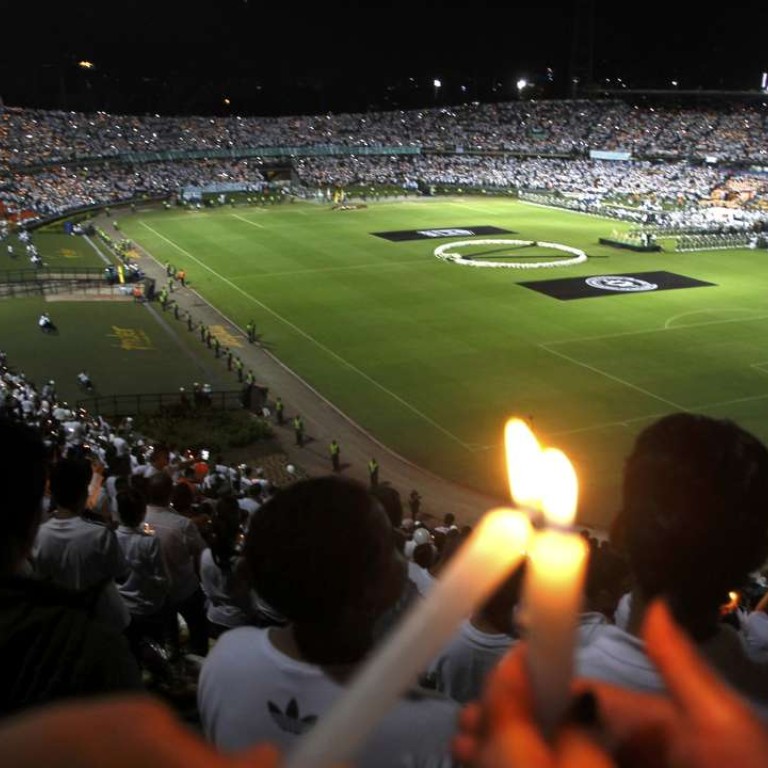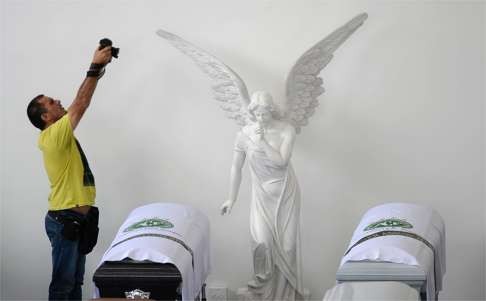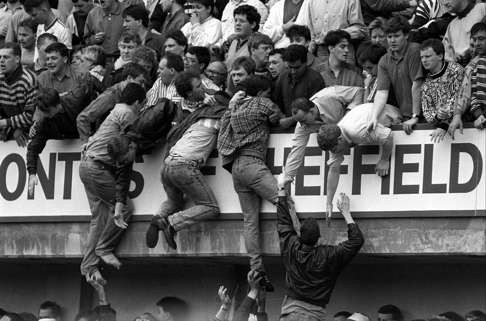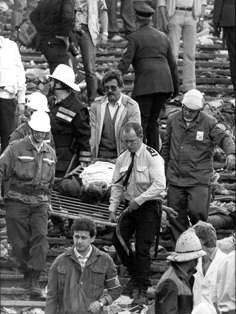
The world of sport could do without the curse of Lady Luck as Chapecoense tragedy triggers reflection of other disasters
The tragedy of the downed plane is Colombia forces us to reflect on the number of men and women who have lost their lives to trivial pursuit
The aftermath of a fatal tragedy sees shock and grief followed by anger. Then blame, and then an investigation – the findings of which, we hope, achieve three things: truth, justice and prevention of something similar ever happening again.
The plane crash in Colombia that wiped out almost all of the Chapecoense football team defies words. The numbing, confusing sentiment is felt not just by their supporters in their small, tight-knit and hitherto largely unknown community in southern Brazil, but also by the global football fan base.
Six people on board survived: three of the players, two flight crew and a journalist. Rescue workers picking through the debris said it was a miracle anyone had escaped alive.

The latter part of the sequence of events has been put down to “bad luck”.
Fate, the fickle, undiscriminating leveller, has once more devastated a football community just as it did to Torino, Manchester and Zambia when their respective football teams were wiped out in plane crashes in the last century.

Looking at the list of incidents and roll call of the scores cut down in their prime, you feel compelled to advocate for a complete ban on our sporting heroes ever taking to the air again in their capacity as competitors; best to travel like that famous aviophobia sufferer, Arsenal legend Dennis Bergkamp, who refused to fly and instead travelled to away games in his motor home, or did not go at all.
“If luck is on your side, you might win the game. If it isn’t, you might die” appears to be the rule of luck.
Any death by human error and so-called bad luck is shocking. But there is something profound about the death of a sports team: each of their stars simultaneously failed to align in their favour at that given, collective moment. It seems even more perverse because the moment of death is in the midst of high spirits and celebration, at the pinnacle of their lives, as the haunting pre-flight photos of the Chapecoense team show they clearly were.

The Orkney Disaster at the Oppenheimer Stadium in South Africa saw 42 lose their lives in 1991 when fans stampeded. And in 2001 the Ellis Park Stadium Disaster in Johannesburg claimed 43 in similar circumstances.
Fourty-four Turkish fans lost their lives during vicious rioting between fans at the Kayseri Ataturk Stadium in 1968. The Soviet government tried to cover up the loss of 66 plus lives after a human crush at the Lenin Stadium in Moscow during the Uefa Cup match between FC Spartak Moscow and HFC Haarlem in 1982.
Argentina mourned 71 deaths after the 1968 Puerta 12 Tragedy at the Estadio Monumental, Buenos Aires; the majority of the dead were teenagers and young adults after a stampede. The same fate was suffered by 79 Egyptians fans at the Port Said Stadium Disaster in 2012.

The worst disaster in the history of the sport occurred at the The National Stadium in Lima in May 1964 during a game between home nation Peru and bitter rivals Argentina. Argentina were 1-0 up in the Olympic qualifying match. Then the referee disallowed a Peruvian goal two minutes from time, sparking protests. 318 people were killed in the ensuing violence, with more than 500 major injuries.
All this death in the name of sport. It’s hard for the human brain to fathom such a senseless, agonising turn of events, so many lost lives because of indulging in an innocuous pastime – one of fun, passion and celebration, playing or supporting a game.
The initial death toll of 75 on the Chapecoense flight this week was revised downwards after it emerged that four people on the plane’s manifesto had failed to board, including the mayor of the team’s home town and the speaker of the state assembly.
“It’s one of those things. Only God knows why I ended up staying behind,” said Luciano Buligon, the town’s mayor.
Whatever saved the fortunate ones, the world of sport would happily play safely without luck’s tragic meddling.

